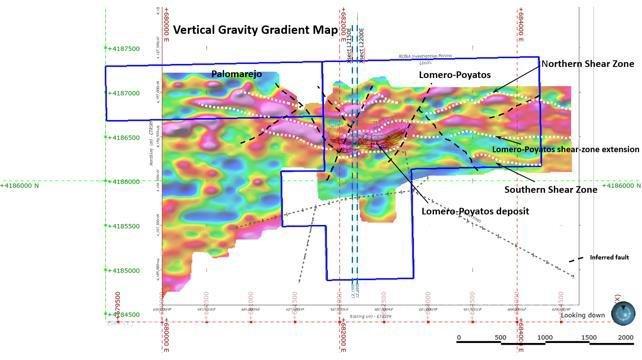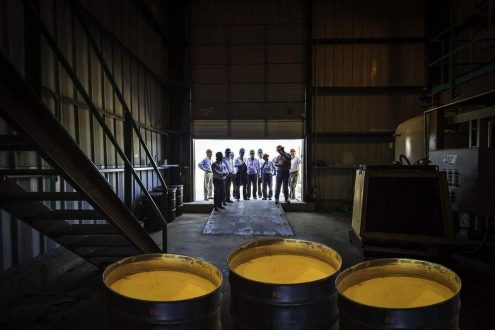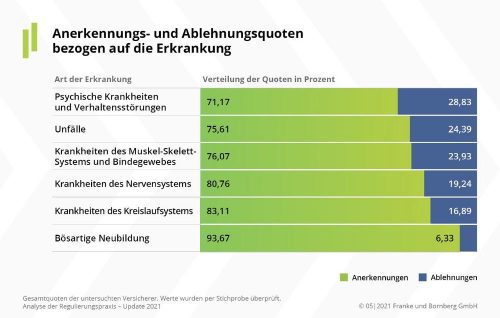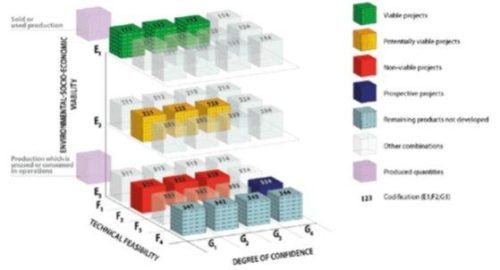
Denarius announces completion of the in-fill drilling program at its polymetallic Lomero-Poyatos Project in Spain
- Drilling program confirms widths and grades of intersections from previous drilling campaigns.
- Preliminary results from recently finalized geophysical surveys confirm the potential to extend the known Lomero-Poyatos deposit down-dip and to find new deposits along strike in two zones to the east.
Denarius Metals Corp. (“Denarius” or “the Company”) (TSXV: DSLV; OTCQB: DNRSF – https://www.commodity-tv.com/ondemand/companies/profil/denarius-silver-corp/ ) announced today that it has received complete assays for thirty-one additional drill holes, mainly in-fill holes, totaling approximately 8,236 meters, from the ongoing surface diamond drilling program on its polymetallic Lomero-Poyatos Project in southern Spain. To date, Denarius has completed approximately 22,543 meters of drilling in 75 drill holes, including twinning of historical drill holes. The validation and in-fill phases, totaling 66 holes and representing 81% of the initial program, are now complete. There are three drill rigs onsite continuing with the resource expansion portion of the initial program. In addition to the diamond drilling, the Company has received preliminary results from the recently completed geophysical surveys that confirm the potential to extend the known Lomero-Poyatos deposit down-dip and to find new deposits along strike to the east in two zones as previously announced based on discoveries made during field mapping.
The helicopter-borne time-domain electromagnetic (“TDEM” or “TEM”) and ground-based gravimetric surveys were completed in mid-April and early May, respectively.
Key takeaways from the exploration work carried out at the Lomero-Poyatos Project to date include:
- Validation and in-fill drill holes have generally confirmed the grades and widths of intersections from previous drilling campaigns, increasing the confidence in the geological understanding of the deposit and allowing proper 3D modelling in preparation for a Mineral Resource estimate update by the end of the third quarter of 2022;
- Drill hole LM22053 was the highlight of the current set of drill holes intersecting 2.65 meters grading 1.69% copper, 0.8% lead, 0.5% zinc, 115.44 g/t silver and 9.56 g/t gold from 268.35 meters;
- Preliminary results from the integrated interpretation of the recently completed geophysical surveys (NRG Europe’s high-resolution Xcite™ TEM/MAG and gravimetry acquired by IGT of Madrid, combined with legacy gravimetric data, have identified significant new targets and demonstrate that conductors associated with the known deposit persist to depths well below the existing drilling;
- The geophysical results are robust enough to allow the planning of an exploration drill campaign aimed to test the combined TEM and gravity anomalies that occur along strike and down-dip of the main shear-zone hosting the Lomero-Poyatos deposit. A parallel shear-zone detected below the Devonian hanging-wall unit and located approximately 1 km north of the Lomero-Poyatos deposit, the Northern Shear Zone, will also be prioritized for drill testing;
- Drill core coarse reject samples to run the first phase of the upcoming metallurgical testing program have already been selected and ready to be shipped to a lab in UK.
Serafino Iacono, Executive Chairman and CEO of Denarius, commented, “We are excited by the progress to date and particularly to be moving the exploration program into the expansion drilling phase as the preliminary results from the integrated interpretation of the recently completed geophysical surveys have expanded the prospectivity for new deposits potentially associated to the down-dip and eastern extension of the shear-zone hosting the Lomero-Poyatos deposit. We are also very encouraged to see other anomalies parallel to the main Lomero-Poyatos shear zone, increasing even further the prospectivity of Denarius’ land package in this prolific metallic belt. The ongoing drilling program has verified the reliability of the historical drill results and will allow proper 3D modelling of the deposit to prepare an updated NI 43-101 compliant Mineral Resource estimate and scoping study by the end of the third quarter of this year. We are confident that our exploration campaign at the Lomero-Poyatos Project will continue to be a key value driver for Denarius as we move forward.”
Key Highlights
- Preliminary results from the integrated interpretation of the recently completed geophysical surveys (NRG Europe’s high-resolution Xcite™ TEM/MAG and gravimetry acquired by IGT of Madrid combined with legacy gravimetric data) provide an accurate reconstruction of the main mineralized horizon that matches the E-W trending shear-zone that hosts the Lomero-Poyatos deposit, which is well marked by coincident conductivity and density (gravimetry) highs. The results show that the eastern extension of this conductor continues over a strike length of 1.5 km, still within the exploration permit, and is open down-dip (see attachment 1).
- Sections L2150E and L2200E, shown in attachments 2 and 3, are good examples of the systematic coincidence of the density and conductivity highs with each other and with the massive sulfide body as shown by the location of the drill hole traces. These sections are typical of the deposit. The main conductor that is associated with the known massive sulfides continues to depths well below the current drilling and is open down-dip. This provides drill targets at depth.
- The geophysical results have also corroborated a recent field mapping discovery coincident with an additional E-W trending shear-zone, called the Northern Shear Zone, that occurs below the Devonian hanging-wall unit located approximately 1 km north of the shear-zone hosting the Lomero-Poyatos deposit.
- The eastern extension of the Southern Shear Zone is clearly delineated by a gravity anomaly and appears to be offset or truncated by a NW-SE trending fault (Attachment 1). This confirms the results of field mapping. The central and western parts of this shear zone were not fully covered by the gravimetric survey, and the conductivity is subject to strong interference from power lines (Attachments 2 and 3), but the target is well defined by field mapping.
- New results from two validation holes in the ongoing drilling program largely validate or improve the thickness and grades of selected drill holes from previous drilling campaigns as shown by the table below: please see attachment
- In-fill drill holes mostly confirmed widths and grades of intersections in drill holes from previous drilling campaigns with maximum intersection grades of 88% copper, 0.53% lead, 1.79% zinc, 37.53 g/t silver and 4.95 g/t gold over 6.60 meters (LM22047), 1.69% copper, 0.84% lead, 0.59% zinc, 115.44 g/t silver and 9.56 g/t gold over 2.66 meters (LM22053), and 0.37% copper, 1.43% lead, 3.16% zinc, 32.59 g/t silver and 1.59 g/t gold over 6.60 meters (LM22063);
- The grades are higher when the massive sulfide zone is predominant. The widths are drill intersections across the mineralized zones and the true width is estimated to be approximately 80-90% of the drill intersections;
- In-fill drilling confirms that the massive and semi-massive sulfide lenses are deformed and pinch and swell abruptly over short distances along strike and down-dip;
- Most of the deepest holes indicate that the massive sulfide mineralization appears to be thinning at depth due to ductile deformation, as the sulfide mineralization is strongly deformed and foliated. No significant brittle faults are observed. Interestingly, the stockwork mineralization does not appear to thin. However, the geophysical results suggest that the massive sulfide mineralization may be widening well below the limit of existing drilling.
- The planned metallurgical testing program has the following goals:
– Determine the amenability of mineralized samples to beneficiation using standard polymetallic base metal sulfide flotation methods.
– Determine the gold deportment, modal occurrence and recovery.
– Separate arsenian pyrite from low arsenic pyrite via selective flotation.
– Samples of coarse rejects from drill core have been selected and are ready to be shipped to a lab in the UK.
The following table lists the key intercepts from the ongoing Lomero-Poyatos drilling program since the Company’s previous press release issued on April 6, 2022: please see attachment
Please refer to the attached illustrative images showing the Vertical Gravity Gradient Map, geophysical cross-sections L2150E and L2200E, location of drill holes, and four cross sections for drill holes LM22029, LM22047, LM22053 and LM22063 (Attachments 1 to 8).
Qualified Persons Review
Dr. Stewart D. Redwood, PhD, FIMMM, FGS, Senior Consulting Geologist to the Company, is a qualified person as defined by National Instrument 43-101 – Standards of Disclosure or Mineral Projects and prepared or reviewed the preparation of the scientific and technical information in this press release. Verification included a review of the quality assurance and quality control samples, and review of the applicable assay databases and assay certificates.
Quality Assurance and Quality Control
The Lomero-Poyatos samples were prepared and assayed by AGQ Labs (ISO/IEC 17025) at their laboratory in Burguillos, Seville, Spain. Gold was assayed by 30 g fire assay with ICP-OES finish, while silver and base metals were analyzed in a multi-element package by aqua regia digestion and ICP-OES finish. Blank, standard and duplicate samples were routinely inserted and monitored for quality assurance and quality control.
About Denarius
Denarius is a Canadian junior company engaged in the acquisition, exploration, development, and eventual operation of mining projects in high-grade districts, with its principal focus on the Lomero-Poyatos Project in Spain and the Guia Antigua Project in Colombia. The Company also owns the Zancudo Project in Colombia which is currently being explored by IAMGOLD Corp. pursuant to an option agreement for the exploration and potential purchase of an interest in the project.
Additional information on Denarius can be found on its website at www.denariusmetals.com and by reviewing its profile on SEDAR at www.sedar.com.
Cautionary Statement on Forward-Looking Information
Neither the TSX Venture Exchange nor its Regulation Services Provider (as that term is defined in the policies of the TSX Venture Exchange) accepts responsibility for the adequacy or accuracy of this release.
This news release contains "forward-looking information", which may include, but is not limited to, statements with respect to anticipated business plans or strategies, including exploration programs, expected exploration results and Mineral Resource estimates. Often, but not always, forward-looking statements can be identified by the use of words such as "plans", "expects", "is expected", "budget", "scheduled", "estimates", "forecasts", "intends", "anticipates", or "believes" or variations (including negative variations) of such words and phrases, or state that certain actions, events or results "may", "could", "would", "might" or "will" be taken, occur or be achieved. Forward-looking statements involve known and unknown risks, uncertainties and other factors which may cause the actual results, performance or achievements of Denarius to be materially different from any future results, performance or achievements expressed or implied by the forward-looking statements. Factors that could cause actual results to differ materially from those anticipated in these forward-looking statements are described under the caption "Risk Factors" in the Company’s Filing Statement dated as of February 18, 2021 which is available for view on SEDAR at www.sedar.com. Forward-looking statements contained herein are made as of the date of this press release and Denarius disclaims, other than as required by law, any obligation to update any forward-looking statements whether as a result of new information, results, future events, circumstances, or if management’s estimates or opinions should change, or otherwise. There can be no assurance that forward-looking statements will prove to be accurate, as actual results and future events could differ materially from those anticipated in such statements. Accordingly, the reader is cautioned not to place undue reliance on forward-looking statements.
For Further Information, Contact:
Christopher Haldane
Vice President, Investor Relations
(416) 360-4653
investors@denariusmetals.com
In Europe:
Swiss Resource Capital AG
Jochen Staiger
info@resource-capital.ch
www.resource-capital.ch
Swiss Resource Capital AG
Poststrasse 1
CH9100 Herisau
Telefon: +41 (71) 354-8501
Telefax: +41 (71) 560-4271
http://www.resource-capital.ch
CEO
Telefon: +41 (71) 3548501
E-Mail: js@resource-capital.ch
![]()



